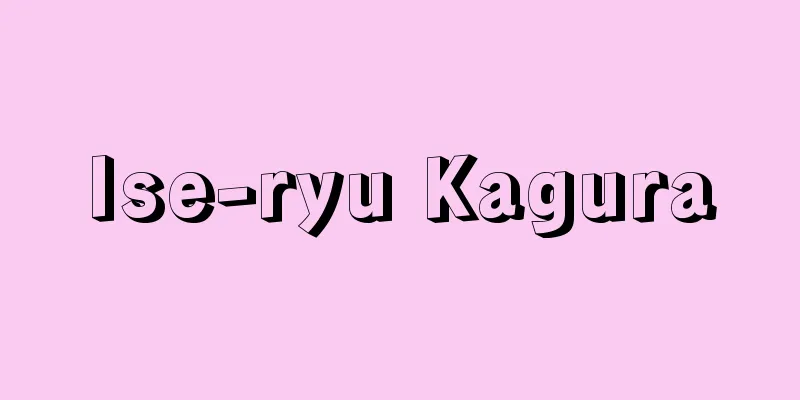Currency exchange

|
Money exchange includes the exchange of various types of currency, as well as the exchange of securities and other goods for currency. Merchants who conduct currency exchange business, as well as deposits, loans, and bill services, are called money changers, or simply money exchange. In Japan, money exchangers appeared in the Middle Ages, and were also called money changers, tally-payers, or money changers, and carried out currency exchange and foreign exchange services. In the Edo period, the money exchange business developed, and was seen to develop not only in the three major capitals of Edo, Osaka, and Kyoto, but also in major castle towns, temple towns, post towns, and port towns. Of these, the system was established early on in Osaka, known as the "kitchen of the nation." Tennojiya Gobei opened the first money exchange shop in 1628 (Kan'ei 5), followed by Kobashiya Joutoku and Kagiya Rokubei, and Konoike Zen'emon also began his money exchange business in 1656 (Meireki 2). There were three types of money exchangers in Osaka: Honryogae, Minamiryogae, and Zeniryogae, and the Ten-person Ryogae system was established in 1670 (Kanbun 10) to regulate Honryogae. According to records from the Kaei period (1848-1854), Honryogae, which had the most resources and credibility, had 179 members, followed by Minamiryogae with 544 members, and Zeniryogae, whose only business was to exchange money, had 617 members. In addition, there was exchange for new rice and exchange for new rice (rice exchange), in which loans were made using goods and rice stamps as collateral. The establishment of money exchangers in Edo was later than in Osaka, but between 1657 and 1682 (Meireki 3 to Tenna 2) there were around 30 honryogae nakama. The representative Edo money exchanger, Mitsui Ryogaeten, became a honryogae in 1689 (Genroku 2). In addition to honryogae, Edo money exchangers also conducted senryogae, and while the honryogae were primarily involved in gold and silver exchange, foreign exchange arrangements, gold and silver rate setting, and tribute inspection, the senryogae were divided into five groups: Gogumi, Sangumi, Ban, Jishakata, and Karigumi, and mainly conducted money exchange. By 1854 (Ansei 1), there were four honryogae and 662 senryogae. As Mitsui Takafusa wrote in his "Chonin Kogenroku" (Records of Townspeople), written between 1726 (Kyoho 11) and 1733, there had been many wealthy money changers in Kyoto since the time of Toyotomi Hideyoshi in the early Edo period, but by the Kyoho period (1716-1736) many of them had gone bankrupt, revealing the shift in power between Kyoto and Osaka. There were various types of money changers in Kyoto, including main money changers, small money changers, new small money changers, and money shops. In addition to the three major capitals, money changers also appeared in major castle towns and regional cities, forming a financial network on a national scale. At the time of the Meiji Restoration, the Western banking system was introduced to Japan and modern financial institutions were established, and in many cases, money changers from the Edo period transformed into banks. [Yotaro Sakudo] "A Study on the History of Japanese Currency Exchange and Finance" by Sadao Matsuyoshi (1932, Bungeishunjusha) Source: Shogakukan Encyclopedia Nipponica About Encyclopedia Nipponica Information | Legend |
|
各種の貨幣を交換し、また有価証券やその他の物品を貨幣と交換することも含めて両替という。この貨幣の交換業務や預金、貸付、手形業務などを営む商人を両替屋とよび、単に両替ともいう。わが国では、中世に替銭屋が出現し、替屋、割符(さいふ)屋、両替衆ともいわれ、両替や為替(かわせ)業務を行ってきた。江戸時代に入って両替業は発達し、江戸・大坂・京都の三都のほか主要な城下町や門前町、宿場町、港町などにおいてもその発展をみた。そのうち「天下の台所」と称された大坂では早くからその制度が整った。天王寺屋五兵衛は1628年(寛永5)に初めて両替屋を開業し、続いて小橋屋浄徳(じょうとく)、鍵屋(かぎや)六兵衛が加わり、鴻池善右衛門(こうのいけぜんえもん)も1656年(明暦2)に両替業を開始した。大坂の両替商は本両替、南両替、銭両替の3種類からなり、本両替の取締りを目的として1670年(寛文10)に十人両替の制度が設けられた。嘉永(かえい)期(1848~54)の記録によると、もっとも資力や信用のあった本両替は179名、それに次いだ南両替は544名、単に金銭の両替のみを業とした銭両替は617名となっていた。そのほかに入替(いれかえ)両替、遣来(やりくり)両替(米方両替)があり、商品や米切手などを担保として貸付を行った。 江戸における両替商の成立は大坂よりも後れるが、1657~82年(明暦3~天和2)のころには本両替仲間30名くらいを数えた。代表的な江戸両替商の三井両替店が本両替となったのは1689年(元禄2)であった。江戸の両替商には、本両替のほかに銭両替があり、本両替は金銀両替・為替取組・金銀相場立て・上納金検査などを主要な業務としたのに対して、銭両替は五組・三組・番組・寺社方・仮組の五組に分かれて両替を主として行った。1854年(安政1)には、本両替4名、銭両替662名となっていた。京都の両替商は三井高房(たかふさ)が1726年(享保11)から33年にかけて著した『町人考見録』のなかで書いているように、江戸初期において豊臣(とよとみ)秀吉時代以来の多数の資力のある両替商がみられたが、享保(きょうほう)期(1716~36)のころになると倒産した場合が多くなり、京都と大坂の勢力交代の状況が明らかにされている。京都の両替商には本両替、小両替、新規小両替、銭屋などの種類があった。三都のほかに、主要な城下町や地方都市にも両替商が現れ、全国的な規模における金融のネットワークが形づくられていた。 明治維新に際して、欧米の銀行制度がわが国に導入され、近代金融機関が設けられたが、その場合、江戸時代の両替商が銀行に転化したことも少なくなかった。 [作道洋太郎] 『松好貞夫著『日本両替金融史論』(1932・文芸春秋社)』 出典 小学館 日本大百科全書(ニッポニカ)日本大百科全書(ニッポニカ)について 情報 | 凡例 |
Recommend
Vogau, BA (English spelling) VogauBA
…The most unique genius among the fellow writers....
Pensées - Pensées (English spelling)
A collection of Pascal's posthumous writings....
Beijerinck, Martinus Willem
[Born] 1851 [Died] 1931 Dutch microbiologist. Prof...
Goidel
…The Irish began calling themselves Gael in the 4...
Azm family - Azmke (English spelling)
A powerful family from Damascus in Syria in the 18...
Predator
… What animals feed on varies from animal to anim...
Collection of Eight Generations
Of the 21 imperially commissioned anthologies of w...
Respond - Respond
〘Noun〙 ("Se" means the command of the Em...
Keijiro Aso
Agricultural chemist. Born in Tokyo, he graduated...
Aloe bainesii (English spelling) Aloe bainesii
…[Hiroshi Yuasa] [Aya Nitta]. … *Some of the term...
Nogiku (Wild chrysanthemum) - Nogiku
A plant of the Asteraceae family that blooms in fi...
balloon frame construction
…Singles, made by splitting cedar or oak into thi...
Akifusa Manabe
A politician in the middle of the Edo Shogunate. ...
Awakening in the middle of the night - Yowanonezame
A full-length story from the late Heian period. It...
Ptolemy Kingdom
A Macedonian dynasty that ruled Egypt from 305 to ...









